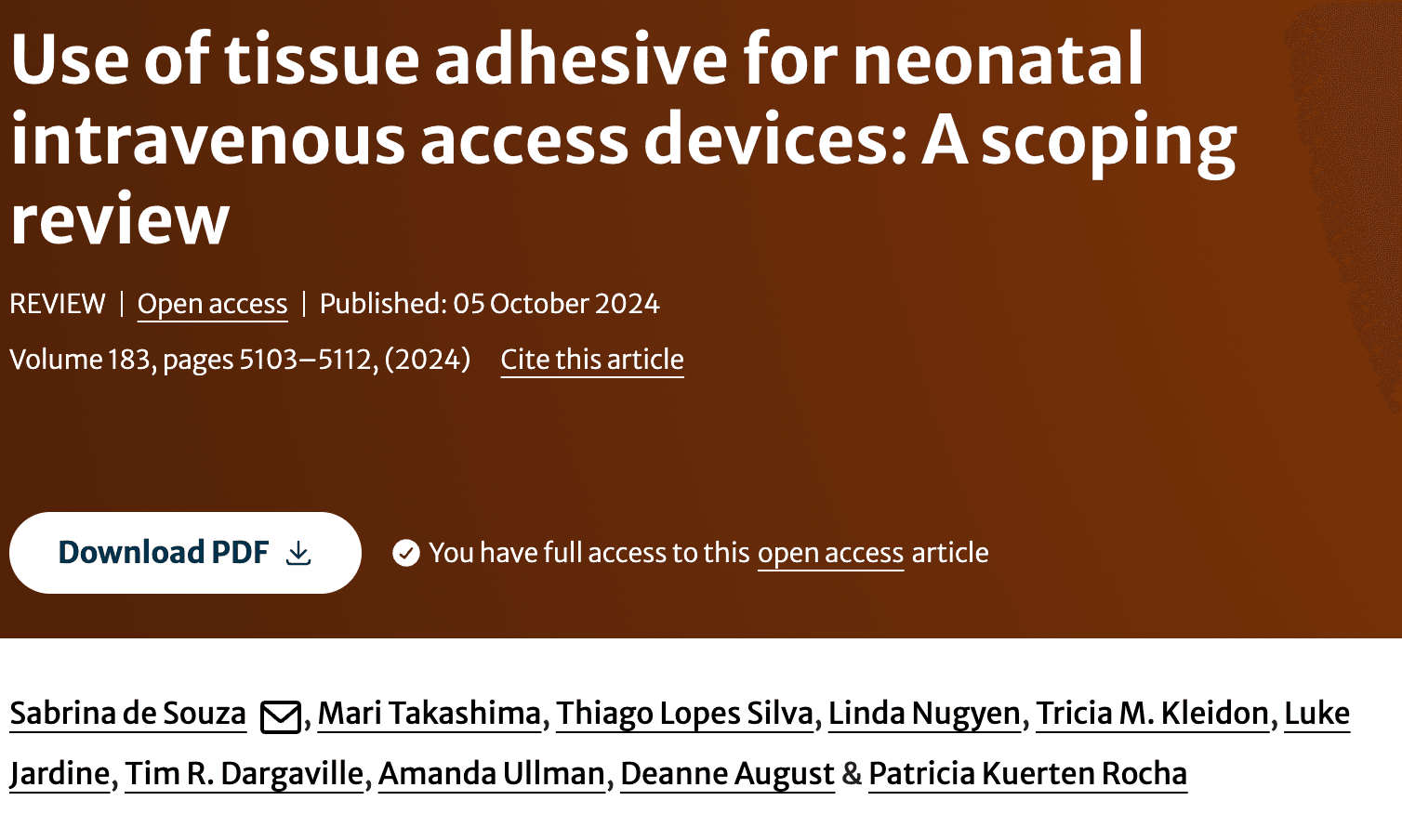Tissue Adhesive for Neonatal Intravenous Access: A Promising Innovation?
)
Neonates often require vascular access devices (VADs) for essential treatments, but complications such as device failure, infections, and dislodgement remain common. In adult and pediatric care, tissue adhesive (TA) has been shown to improve catheter stability and reduce failures. However, evidence for its use in neonates is still evolving. A recent scoping review explores the current research on TA for neonatal intravenous access and highlights gaps that need further investigation.
Study Overview
This review analyzed 12 studies published between 2007 and June 2024, evaluating the use of TA in neonates with central venous access devices (CVADs) and peripheral intravenous catheters (PIVCs). Researchers assessed how TA impacts device security, infection rates, and complication rates across different studies.
Key Findings
- Potential to Reduce Complications: Studies showed a decrease in dislodgement rates (as low as 0.7% for peripherally inserted central catheters (PICCs) with TA, compared to 11.3% without TA) and catheter-associated bloodstream infections (CLABSI) (reduced to 3.1% in umbilical venous catheters with TA vs. 7.7% without).
- Increased Device Dwell Time: Some studies found that PIVCs with TA lasted longer than those secured by traditional methods, potentially reducing the need for repeated insertions.
- Lack of Standardization: The type and amount of TA used varied across studies, making it difficult to determine best practices for neonatal patients.
- Limited Neonate-Specific Research: Most studies included both term and preterm neonates but did not differentiate outcomes based on gestational age.
Clinical Implications
- TA could be a valuable tool for securing neonatal vascular access, reducing complications and improving device longevity.
- More rigorous studies, including randomized controlled trials (RCTs), are needed to establish the safety and efficacy of TA in neonates.
- Standardized guidelines for TA application in neonatal vascular access should be developed.
Conclusion
Tissue adhesive holds promise for improving neonatal vascular access care, but current evidence is limited and inconsistent. More research is needed to define best practices, safety parameters, and effectiveness in this fragile population.
Read More: https://link.springer.com/article/10.1007/s00431-024-05800-3
Authors: Sabrina de Souza, Mari Takashima, Thiago Lopes Silva, Linda Nugyen, Tricia M. Kleidon, Luke Jardine, Tim R. Dargaville, Amanda Ullman, Deanne August & Patricia Kuerten Rocha








